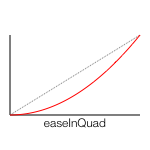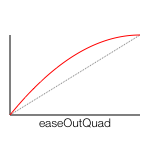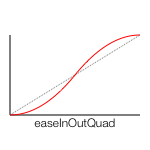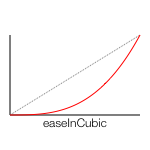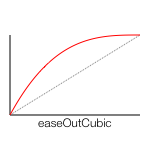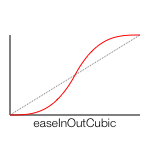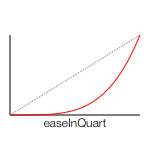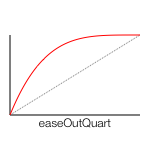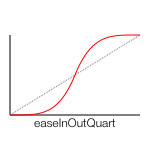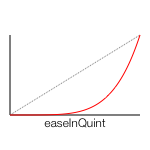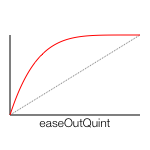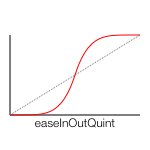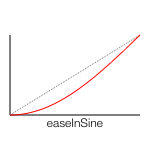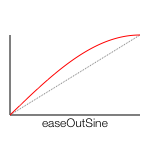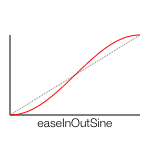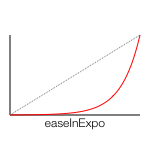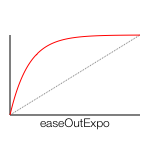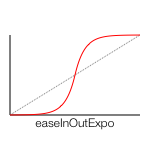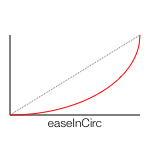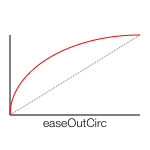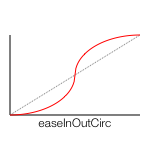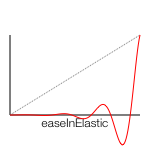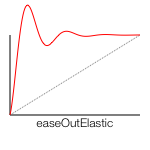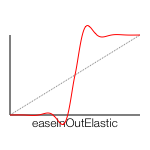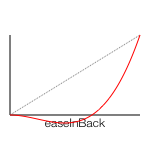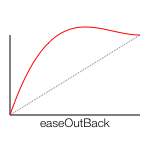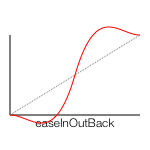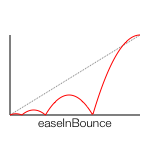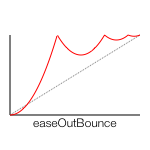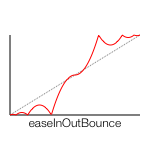TrAnimate 1.0.4
| TestsTested | ✗ |
| LangLanguage | Obj-CObjective C |
| License | BSD 2.0 |
| ReleasedLast Release | Dec 2014 |
Maintained by Kristian Trenskow.
TrAnimate 1.0.4
- By
- Kristian Trenskow
- trenskow
(A programming guide is currently being written)
TrAnimate iOS Animation Library
TrAnimate is an iOS animation library designed to make it easy to create complex animations, without the need for using Core Animation.
Setting up TrAnimate
By Copying Source Files
There are three ways of incorporating TrAnimate into your project. First is to copy all sources into your current project and include the headers by adding the following.
#import "TrAnimate.h"
As a Framework or Module Using Git
Alternatively you can use git's submodule feature and the subproject feature of Xcode to incorporate TrAnimate into your project - givin' it uses git. This also gives you the benefit of being able to update TrAnimate whenever the master branch is updated. A simple pull gives you the latest and greatest features from the TrAnimate repository.
Adding a submodule and subproject to your project
Open a terminal and go to the root of your Xcode project and type the following.
git submodule add https://github.com/trenskow/TrAnimate.git TrAnimate`.
This will add TrAnimate as a subproject and download all sources from Github.
Next drag the TrAnimate.xcodeproject (which is now in the subfolder TrAnimate of your project) into your project source tree in Xcode.
Add as a Module (iOS 8)
Simply add it as a module to your sources by importing the module in your sources.
@import TrAnimate
Add as a Statically Linked Framework (iOS 7 and below)
- Go to the application settings in Xcode
- Choose the "Build Phases" tab.
- Add
TrAnimate Staticto your "Target Dependencies" and addlibTrAnimate Static.ato your linked binaries.
- Add
- Choose the "Build Settings" tab.
- Add the following to your "Header Search Paths".
$(SRCROOT)/TrAnimate
- Add the following to your "Header Search Paths".
- Choose the "Build Phases" tab.
Now import the umbrella header in your sources when you need TrAnimate.
#import <TrAnimate/TrAnimate.h>
Using TrAnimate
Introduction
An example of a fade animation using TrAnimate
[TrFadeAnimation animate:aView
duration:.3f
delay:.0f
direction:TrFadeAnimationDirectionIn];
The above code will fade aView immidiately.
Another example could be
[TrPositionAnimation animate:aView
duration:1.0
delay:.0f
toPosition:CGPointMake(100.0, 100.0)
anchor:TrPositionAnimationAnchorAutomatic
curve:[TrCurve easeInBounce]
completion:^(BOOL finished) {
NSLog(@"Move in complete!")
}];
This will move aView to position 100.0, 100.0. The curve specifies that aView should bounce out. Lastly the completion block logs Move is complete! when the animation completes.
Available animations
The individual animations has special creator methods available. Look in the documentation of each animation to see how to create them.
TrPositionAnimation
Moves a view from one location to another, not affecting the view's size.
TrFadeAnimation
Fades in a view. The view can either fade in or out.
TrOpacityAnimation
Changes the opacity of a view.
TrScaleAnimation
Scale a view from an optional start value to an end value.
TrRotateAnimation
Rotates the view around an axies from an optional start value to an end value.
TrLayerAnimation
This is for all your animation needs on CALayer not avaiable above. TrLayerAnimation takes a CALayer and a key path and animates it.
TrDirectAnimation
TrDirectAnimation animates without the use of Core Animation and is therefore useful if you want to animate properties of objects not supported by Core Animation. An example could be the contentOffset of a UIScrollView or even the volume property of a AVAudioPlayer.
Curves
Predefined Curves
All animations support custom animation curves. Curves are implemented using blocks, but there are some build-in curves which is adapted from jQuery UI. A curve is represented using the TrCurve class which has also holds the build-in curves.
The build-in curves are:
Custom Curves
Custom curves can be implemeted either by subclassing TrCurve and overriding the transform: method - or they can be created using blocks as below.
[TrCurve curveWithBlock:^(double t) {
return (-1.0 * cos(t * M_PI_2) - 1.0);
}];
Above is the actual implementation of the [TrCurve easeInSine] curve. The parameter t represents a value between 0.0 and 1.0. Animation blocks must return a double.
In the same way custom curves can be used directly in animations as below.
[TrRotateAnimation animateView:aView
duration:.3f
delay:.0f
toAngle:M_PI_4
axis:TrRotateAnimationAxisZ
curve:[TrCurve curveWithBlock:^(double t) {
return t / 2.0;
}]];
The above will rotate aView from zero radians to M_PI_4. But the curve provided will effectively half the endAngle because t is divided by 2.
Animation Groups
Animation groups allow you to group animations and determine when which animations should run. It allows you to group other animation groups and really is a powerful tool for chaining animations.
(This documentation will be updated to explain in more details how animation groups work)
About TrAnimate
TrAnimate was created out of the need to create complex animations without the constant need of using complex Core Animation setups. Also to accomodate the lack of custom interpolation and curves provided by Core Animation.
State of Development
TrAnimate has been spun off from the application from which it origins and made available as an open source project. The application in question is the KREAFUNK app - download it on the App Store)
TrAnimate is not complete. It is constantly developed to add more features. Transitions are currently in the process of being implemented.
Contribution
Contributions are always appreciated. Especially for specialized animations. If you have any additions, that you wish to have incorporated into the library please create a pull request.
Acknowledgements
All curves has been adapted from the jQuery UI library. The jQuery and jQuery UI libraries are designed for high quality browser interaction and animations, and provide a rich set of animation curves.
Notes
TrAnimate requires ARC.

